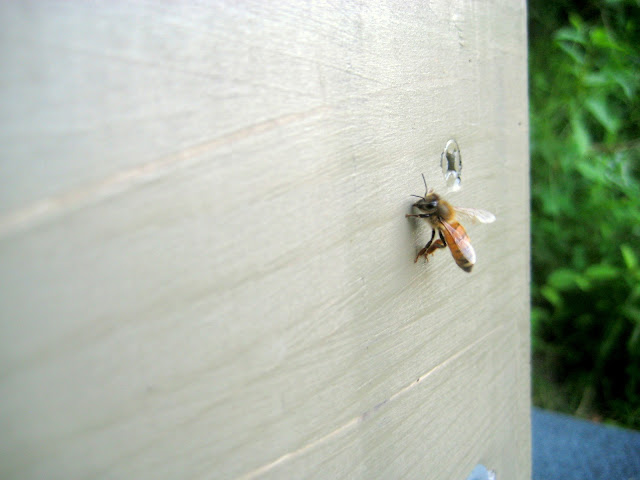My bees arrived on June 5th. I got the call from the post office, slightly more confident than last year, and again was able to swing by before work. The same woman who helped me last year was there again, but this time she went to get the bees herself and wheeled them out on a cart. To my surprise, what she wheeled out was not one 3lb package of bees, but two!
I had some time once I got to the nature center to prep some bee things. First, I "painted" the screens of the packages with sugar water to give the new colonies some fresh food. Once they were in a shaded, secure location, I was able to get out the honeycomb from the old hive and thaw it. I wouldn't be installing the packages until later in the day to ensure they would get accustomed to their new home.
 |
| 6-lbs of bees and some combs. |
So, what to do with the extra package? Wally had a new and empty top bar hive with honey stores added to it in the apiary. I figured that would be the best place to put them since each package had a queen.
 |
| My hive (right) and Wally's (left) and the packages. |
Our apiary seemed like it was going to go from pitiful to productive with this bonus package. Then, I took out the queen cage from the first one. Of course, she was dead.
 |
| The dead queen. |
Unfortunately, I now had to decide quickly what to do with all these bees. I installed the second package into my hive (the queen looked great) and stopped to think for a minute. I could call Draper's and let them know about the dead queen, but since the package was a bonus, I would feel bad having them send me a replacement for a queen I had never ordered. I also didn't want to keep the bees packaged up any longer.
 |
| My bees finding their way into the hive . . . but getting confused by the other package. |
The next morning, all the bees had moved into the hive and there were many flying in and out of the entrance. It looked as though they had all gotten along well enough to become one (huge) starter colony. As you saw previously, the plethora of bees allowed for quick comb build up and plenty of foraging.
 |
| A bee waving pheromones in the air to call others to the hive. |









